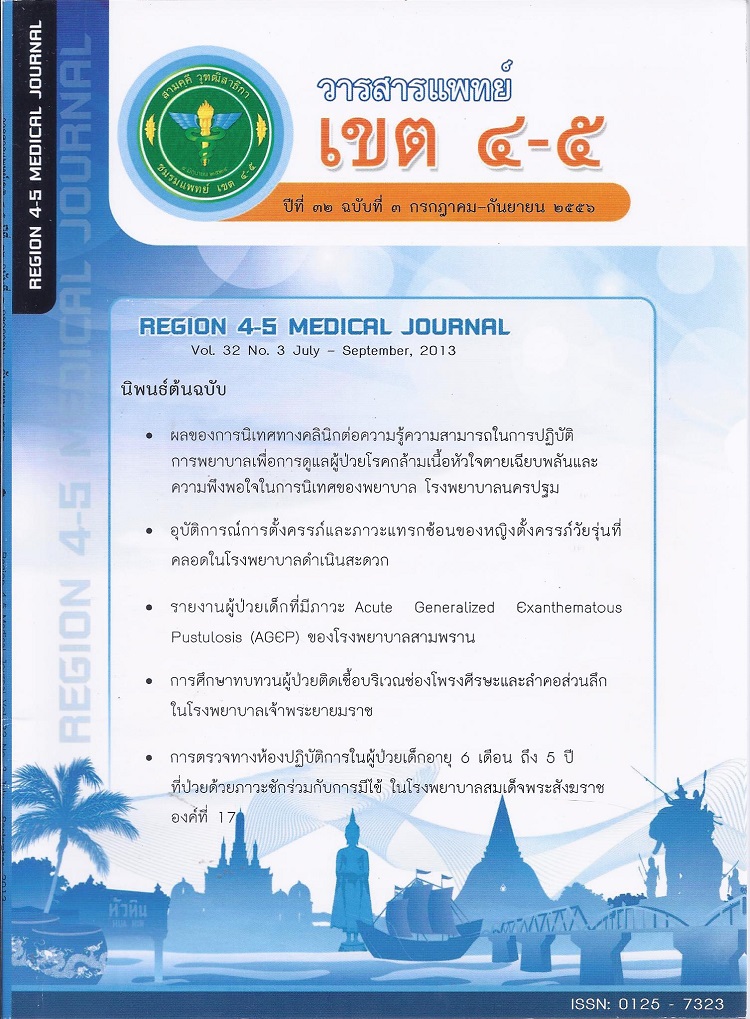การศึกษาทบทวนผู้ป่วยติดเชื้อบริเวณช่องโพรงศีรษะ และลำคอส่วนลึกในโรงพยาบาลเจ้าพระยายมราช
บทคัดย่อ
Objective: To study the natural history of deep head and neck infection in Chaoprayayomraj Hospital including bacteriology, underlying diseases, prognostic factors, appropriate antibiotic and treatment.
Design and methods: Retrospective descriptive study was done in patients who had signs and symptoms of deep head and neck infection at Department of Otolaryngology, Chaoprayayomraj Hospital during January 2008 to June 2013.
Results: Of the 203 patients, 52% were male and 48% were female, incidence of age was 4 months to 89 years old and the mean of age 42.92 years old. The common infected fascial spaces were submandibular space (33%), buccal space (19%) and peritonsillar space (14%). The most common symptoms and signs were tenderness and swelling at head and neck (88%). The most common cause was odontogenic infection (57.6%). Pus cultures revealed growth of organisms in 35.2%. The most common isolated aerobic bacteria were Staphylococcus aureus (30.4%), Klebsiella pneumoniae (28.6%) and Streptococcus spp. (23.2%). The most common underlying disease was diabetes (19.2%). The complications were upper airway obstruction (7.88%) and sepsis (4.93%). Mortality rate was 1.97%. The average length of stay in hospital was 7.74 days.
Conclusions: Poor oral hygiene and odontogenic infections were the most common factor of deep head and neck infection. Early diagnosis and appropriate treatment were important to lessen morbidity and mortality. Treatment should consist of intravenous antibiotics, surgical drainage, control underlying disease and adequately controlling of airway.
ดาวน์โหลด
เผยแพร่แล้ว
รูปแบบการอ้างอิง
ฉบับ
ประเภทบทความ
สัญญาอนุญาต
ลิขสิทธิ์บทความเป็นของผู้เขียนบทความ แต่หากผลงานของท่านได้รับการพิจารณาตีพิมพ์ลงวารสารแพทย์เขต 4-5 จะคงไว้ซึ่งสิทธิ์ในการตีพิมพ์ครั้งแรกด้วยเหตุที่บทความจะปรากฎในวารสารที่เข้าถึงได้ จึงอนุญาตให้นำบทความในวารสารไปใช้ประโยชน์ได้ในเชิงวิชาการโดยจำเป็นต้องมีการอ้างอิงถึงชื่อวารสารอย่างถูกต้อง แต่ไม่อนุญาตให้นำไปใช้ในเชิงพาณิชย์




